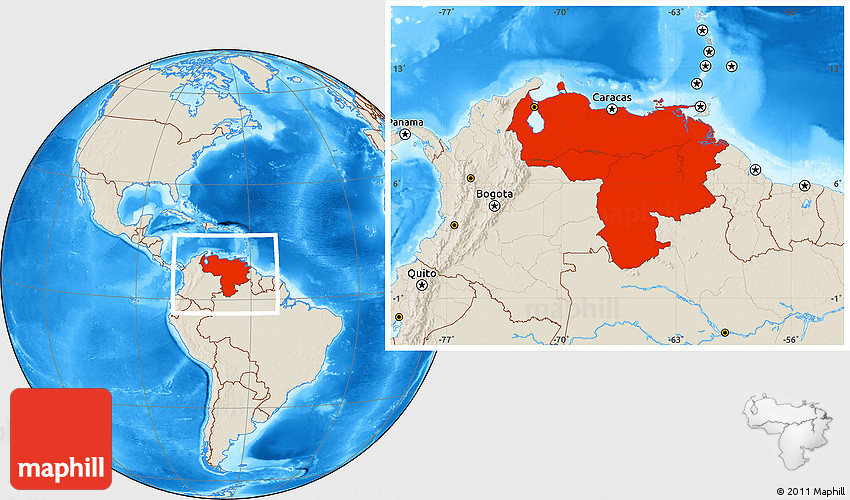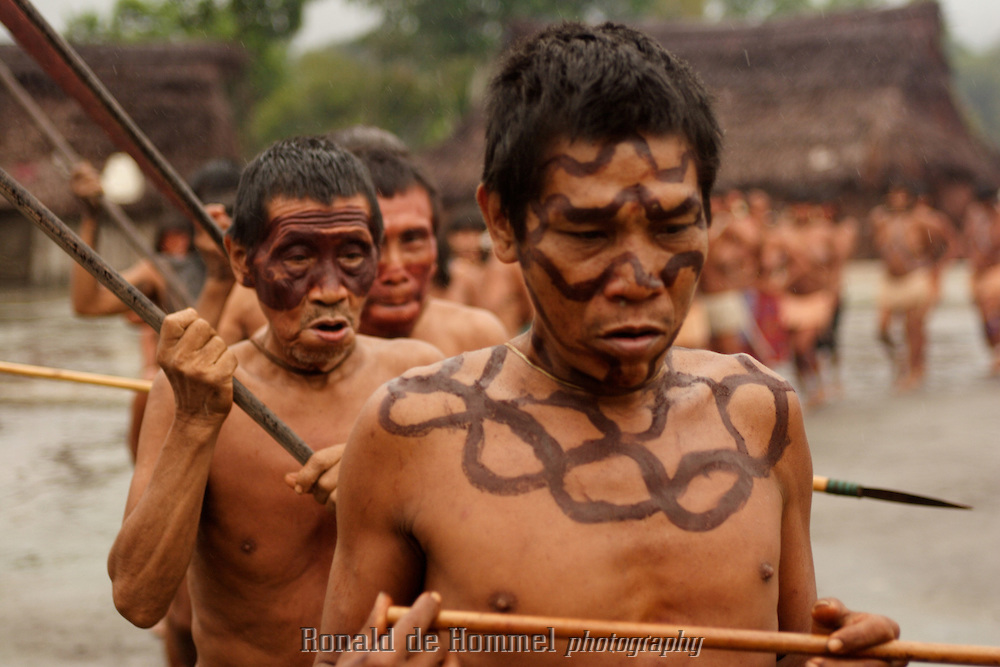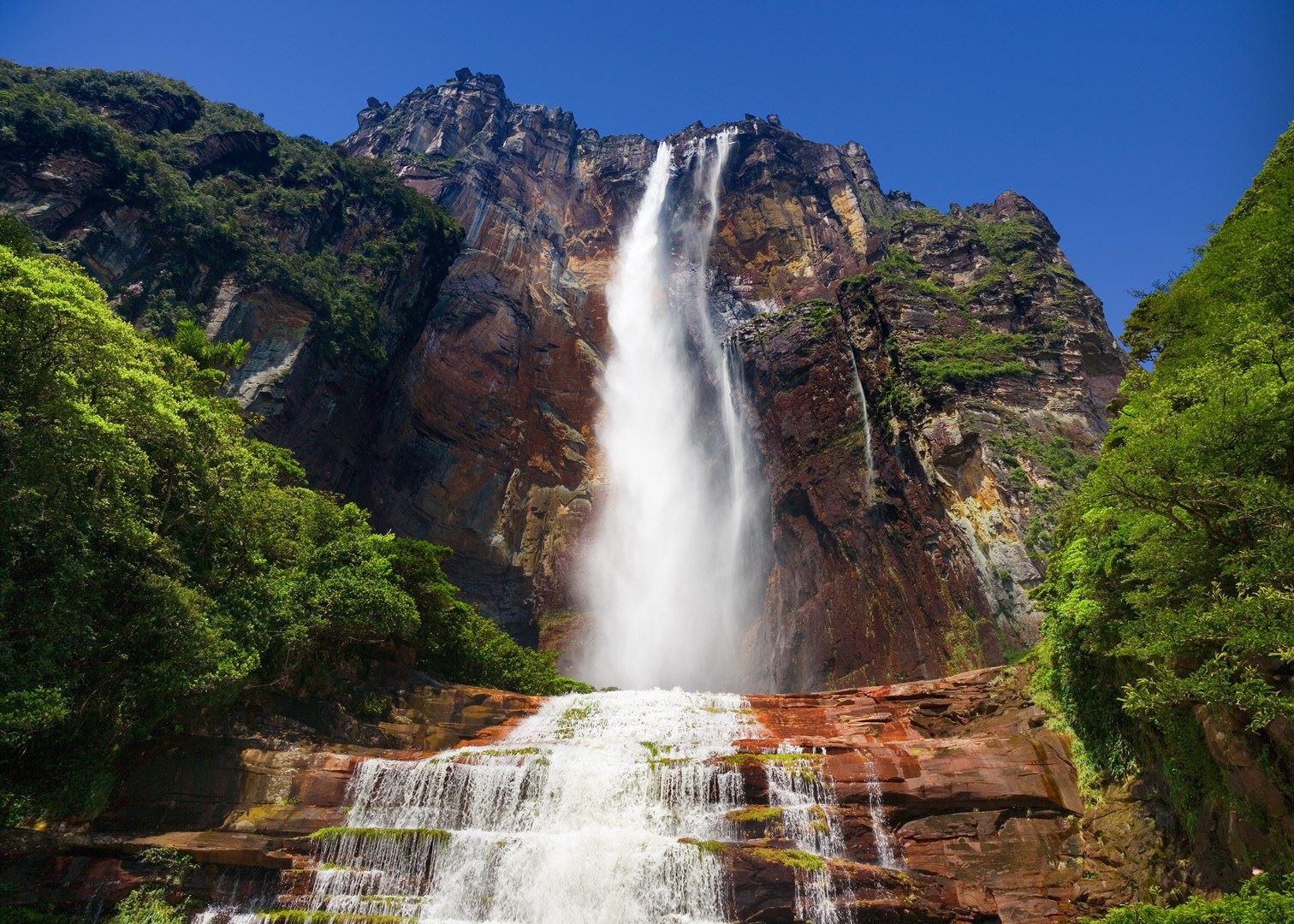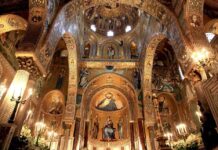Venezuela, located in the northern part of Latin America, has remained in the memory of the international community for several reasons. Its beautiful surroundings, the former President of Venezuela Hugo Chavez and the beautiful women have managed to hold the attention of many people in the world. Venezuela does not have a dark side such as drug and arms trafficking.
Benezuvela is very rich in terms of natural beauty. Especially since it is located next to the world’s largest rain forest, the Amazon forest, there is no shortage of biodiversity there. Venezuela is blessed with many natural attractions, including the world’s highest waterfall, Angel. For these reasons, we decided to bring you some interesting information about this beautiful country.
Location of the switch

Venezuela is located on the border of the northern coast of South America. It has an area of 912,050 square kilometers with a maximum width of 1,487 kilometers and a maximum length of 1,175 kilometers. In addition, there is some dispute between Venezuela and Guyana over an area of about 130,000 square kilometers around the Isecubo River.
Venezuela is bordered by the Caribbean Sea and the Atlantic Ocean to the north, Guyana to the east, Brazil to the south and Colombia to the west. Venezuela also has a 2,800 km long coastline. The capital is Caracas.
A history of change

Indigenous peoples have lived in Venezuela since ancient times. Christopher Columbus landed here in 1498 AD, marking the first European to set foot on the land of Venezuela. Later, Venezuela came under the control of the Spanish. In AD 1811, Venezuela declared its independence, but was soon returned to Spain.Back in 1821, under Simón Bolívar, this country was freed for a short time as Gran Colombia along with Colombia and Ecuador, and in 1830 it became a fully independent state as ‘Venezuela’.
The development of Venezuela began in 1914 with the discovery of petroleum in its territory. Venezuela, which became a democratic state in 1958, became a left-wing state in 1998 under Hugo Chavez. Currently, there are 32.3 million people living here and some of them are suffering from poverty and the effects of gangs.
Topography and Climate of Venezuela

It has been divided into several regions with different climatic conditions by the Orinoco River and the mountain ranges located in Venezuela. The Maracaibo Valley is located in the northwest and is a dry area with less wind. The climate of the Andes and northern Usbms is temperate, while the warm central plains are mostly fed by the Orinoco River.
To the southeast of Venezuela lies the Guyana Highlands with a thickening mantle. Some of these highlands are located at a height of up to 3,500 meters.
Venezuela has many large and small rivers and lakes, the largest of which is the Orinoco, which has many tributaries. Lake Maracaibo, located in the northwestern part of Venezuela, is known as the largest lake in South America. At 4,978 meters, Pico Bolivar is the highest peak in Venezuela.
Lake Maracaibo (David Kjelkerud/Flickr)

Venezuela generally inherits a subtropical climate. The average temperature in the plains of Venezuela fluctuates between 24-27 degrees Celsius most of the year. Temperatures range from 0-10 degrees Celsius in the higher elevations, while average temperatures in the drier western part exceed 35 degrees Celsius. Annual rainfall in Venezuela also varies greatly from place to place, ranging from 300 to 2000 millimeters in most places.
Biodiversity in time of change
280 species of mammals live in the desert. Animals such as jaguars, pumas, monkeys, sloths and dolphins living in the freshwater can be seen here. Many of these species are endemic to the changing times.
The dense forests covering the mountainous areas of Venezuela provide ideal habitats for these animals. These forests are also inhabited by many types of creepers.
Ethnic diversity in Venezuela
Venezuela is one of the most ethnically diverse countries. About half of the people here belong to mestizo or people of Latin American, Indian and European origin, and about 40% are white Europeans, about 3.5% are black people of African origin, and about 1.2% are natives. The majority of people here are Catholics.
Tourist places in Venezuela
Venezuela is a haven for tourists who appreciate the natural beauty. Especially the land inhabited by mountains and valleys. Tourists from all over the world are naturally drawn to this land due to its proximity to the Amazon forest, lush tropical forests and beautiful beaches.
Angel Falls

Angel Falls is considered one of the main tourist spots in Venezuela. This is the longest continuously cascading waterfall in the world. At a height of about 978 meters, it falls from the Ayuan-Thepui mountain and is located in the Kanamia National Park. The water needed for this is supplied by the river Gauja.
This is named in honor of Jimmy Angel, an American pilot who revealed this to the world. Expect to see the maximum body of water at Angel Falls from June to September.
Los Llanos
This grassland, which belongs to both Venezuela and Colombia, is located in the Orinoco River Valley. During the rainy season, which extends from May to October, there are usually even floods, making this a very suitable place for bird watching. During the dry season, this area is filled with various animals and reptiles.
Los Roques

Made up of several islands, Los Roques National Park was declared in 1972. This is the largest marine park in the Caribbean. The coral reefs and beautiful aquatic plants located here, as well as the sea creatures that live in the vicinity, are also unique. Also, this area has a clean and warm beach suitable for diving and boating as well as water sports.



